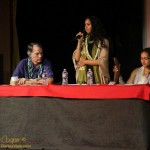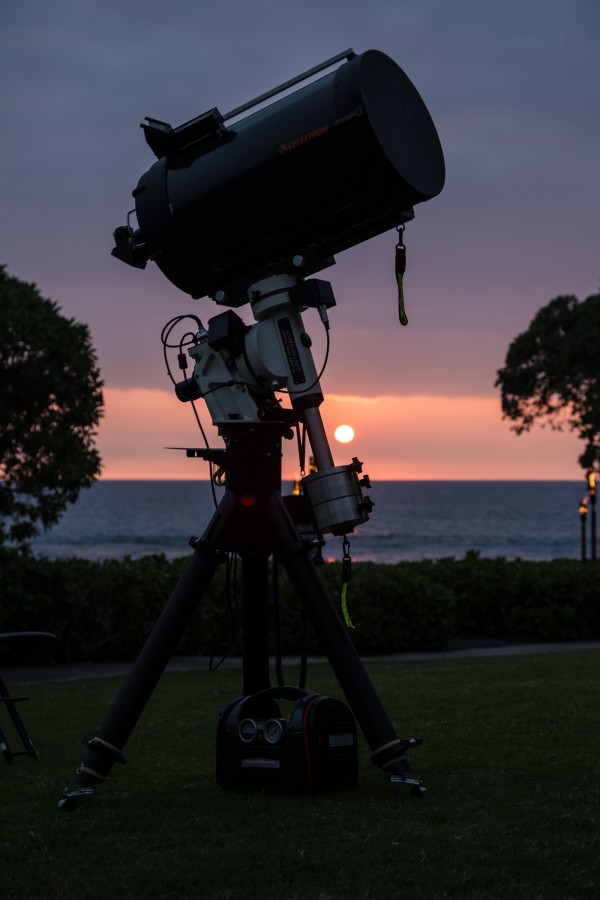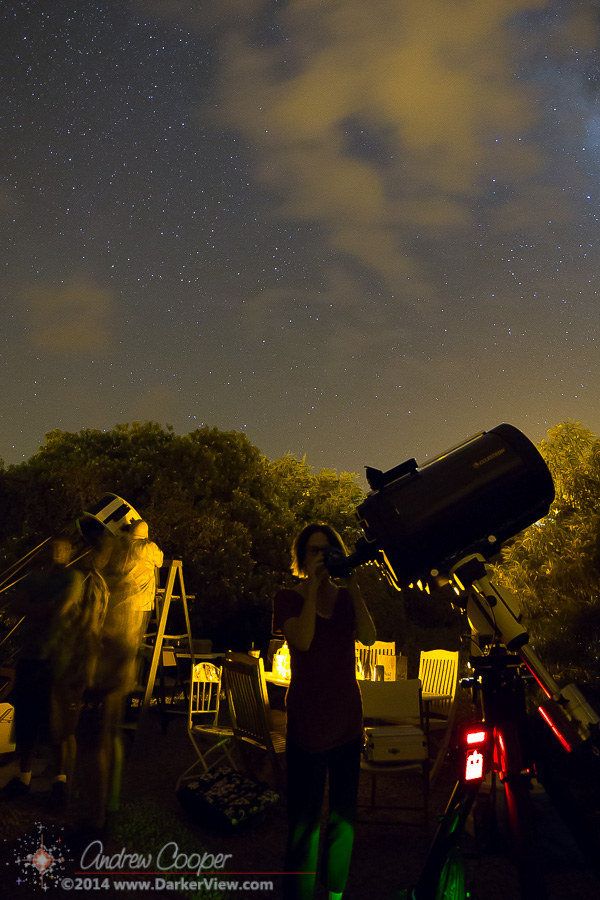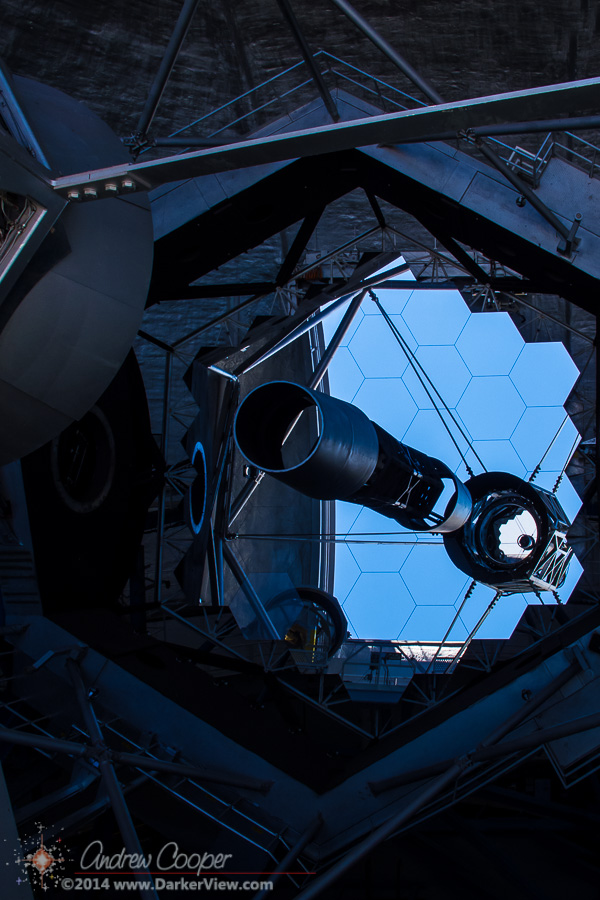
Tag: telescope
Another Peek into CFHT
Upgrades. With 20 year old systems upgrading and replacing old gear is a constant job. It is even worse over at CFHT, their facility is quite a bit older than ours at Keck. Does this mean the telescope is obsolete? No way. most systems have been constantly updated with new technology. But it does take quite a bit of work…
Canada France Hawaii Telescope Upgraded TCS testing from CFHT on Vimeo.
A Peek into CFHT
What do we really spend our days doing on the mountain? Usually pretty mundane stuff, just fixing stuff and making improvements to the gear. A little peek into one of those improvements over at CFHT, a fiber run to allow the 8 meter Gemini telescope to feed a spectrograph next door at CFHT. Something not so mundane, rather fun actually…
Canada France Hawaii Telescope Graces Fiber Link with Gemini Telescope from CFHT on Vimeo.
Perspectives on the Future of Mauna Kea
A lot of emotion and bandwidth has been swirling around our mountain this past month. It has been unfortunate that two otherwise positive forces have collided atop one summit. Last night the local community had a chance to listen to various perspectives in a more personal and reasoned forum. The Honokaʻa Peoples Theater, located on the slopes of Mauna Kea is the perfect place for this to happen. An evening of face to face discussion.

The format was simple, a presentation by Hāwane Rios, explaining her perspective on growing up in the traditions of Mauna Kea. This was followed by a presentation by Doug Simons, executive director of the Canada-France-Hawaii Telescope. After a 15 minute intermission there was another hour of panel discussion with questions provided by the audience. What started at 6pm went on until well after nine, with personal conversations that kept the theater a buzz until well after 11pm.
Unfortunately one of the featured speakers Lanakila Mangauli was unable to attend, having flown to Oahu for a hasty meeting with OHA and state officials. He was not completely absent, a Skype connection projected on the theater screen allowed him to give a short presentation at the start. After having watched video of his tirade (Yes, I will call it that!) at the TMT groundbreaking ceremony, I had been given a somewhat less than flattering opinion of him. The person who addressed the audience this night was much more impressive, giving an intelligent and reasoned argument to his cause. I wish he had been able to address the audience in person.

Doug Simons also related his personal connection to the mountain, having spent the last 30 years working, hunting and raising his family here in Waimea and on Mauna Kea. Starting with the great discoveries that have been accomplished by the telescopes atop Mauna Kea, Doug did an admirable job of covering the importance of the research done at the telescopes and why these great instruments belong to all of mankind.

I spent the evening listening and operating a production video camera we had brought over from Keck. CFHT, Subaru and Keck staff operated a battery of audio/visual gear, live casting the event on YouTube, recording video for later editing and managing a Skype connection for Lanakila. I expect we should have good videos up shortly, they are definitely worth watching by anyone interested in the issues surrounding our mountain. The presentation by Hāwane should be worth watching just to hear her sing. I will put the links here as soon as they become available.
Update… Check out the video here.
Citizen Scientists Lead Astronomers to Mystery Objects in Space
Sometimes it takes a village to find new and unusual objects in space. Volunteers scanning tens of thousands of starry images from NASA’s Spitzer Space Telescope, using the Web-based Milky Way Project, recently stumbled upon a new class of curiosities that had gone largely unrecognized before: yellow balls. The rounded features are not actually yellow — they just appear that way in the infrared, color-assigned Spitzer images.

“With prompting by the volunteers, we analyzed the yellow balls and figured out that they are a new way to detect the early stages of massive star formation,” said Charles Kerton of Iowa State University, Ames. “The simple question of ‘Hmm, what’s that?’ led us to this discovery.” Kerton is lead author, and Wolf-Chase a co-author, of a new study on the findings in the Astrophysical Journal.
The Milky Way Project is one of many so-called citizen scientist projects making up the Zooniverse website, which relies on crowdsourcing to help process scientific data. So far, more than 70 scientific papers have resulted from volunteers using Zooniverse, four of which are tied to the Milky Way Project. In 2009, volunteers using a Zooniverse project called Galaxy Zoo began chatting about unusual objects they dubbed “green peas.” Their efforts led to the discovery of a class of compact galaxies that churned out extreme numbers of stars.
Continue reading “Citizen Scientists Lead Astronomers to Mystery Objects in Space”
C-14 Sunset
The List
I usually have a list of things that need done on the summit. Mostly manini things, stuff that takes a few minutes, or maybe an hour. Not enough to justify a day on the summit, this stuff can usually wait for a week or two, until I find time. When a more serious issue takes me to the summit, something that must be done, it may take an hour, or half a day. When the main thing is done I always have the list to fill in the remainder of the day.

A small yellow-lined piece of paper pulled from a pad, a scrap that would rule my day on the summit. I slip the list into my left breast pocket beside a black ball-point pen.
Attach a data logger to the K2 shutter drive controllers and move the top shutters. The data looks… Ummm… interesting. That will wait for another day to analyse. The shutters have been faulting out a bit lately, there is something wrong with the VFD drives, but I am not sure what. Hopefully the answer is in the data. Much of the morning is consumed with getting the test done.
Align the WYKO interferometer under the AO bench… No problem, takes five minutes… After I gown up to enter the AO enclosure. I can replace the wave front camera controller while I am in there, just swapping the unit with the controller from the development lab at headquarters. Alignment complete, nice fringes on the video monitor… Sam will be happy with that.
Time for lunch and a game of cribbage, a busy day makes this break all that much more enjoyable, It is a fun game, even if we do lose. We do not keep score, we play for fun and bragging rights for the day. All is forgotten a day later, with years of experience the skill level is pretty even and everyone takes a turn winning or losing.
A tour at 1pm, some family friends from Portland getting a tour of the telescope, always fun. A meeting at 3pm… I forget what for now… It must have been terribly important. The day was just a mite hectic, hurrying from task to task. Slowly the list dwindled as I cross off items.
As we headed down the mountain, I pulled the now well tattered list from my pocket. Not complete, a couple items will wait for another day. But still… A sense of satisfaction, of accomplishment. None of these tasks were of major importance, none would stop the telescope from going on-sky that night, just the routine minutiae of keeping the telescopes operating.
Gemini Panorama
Last week I visited Gemini to see their TBAD installation. While we were on the dome floor I used Google Photo Sphere to shoot a few full panoramas of the telescope…



